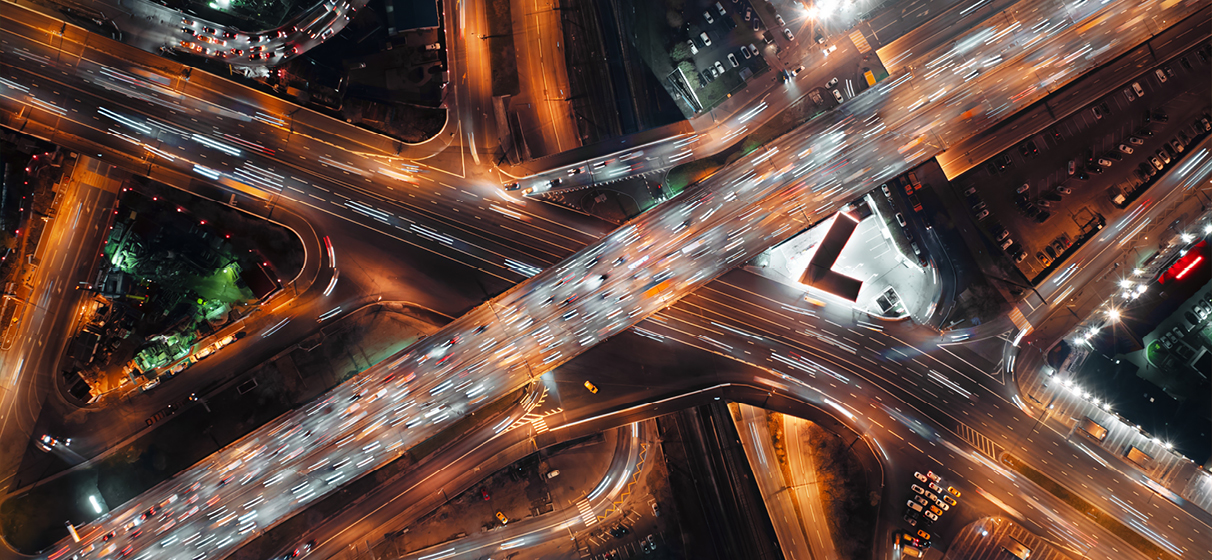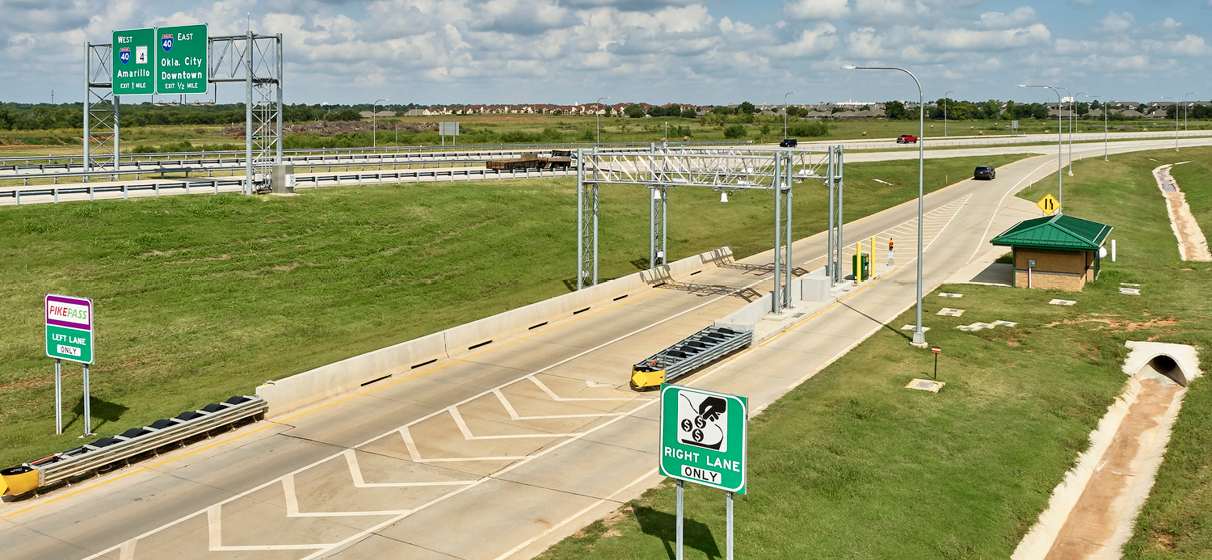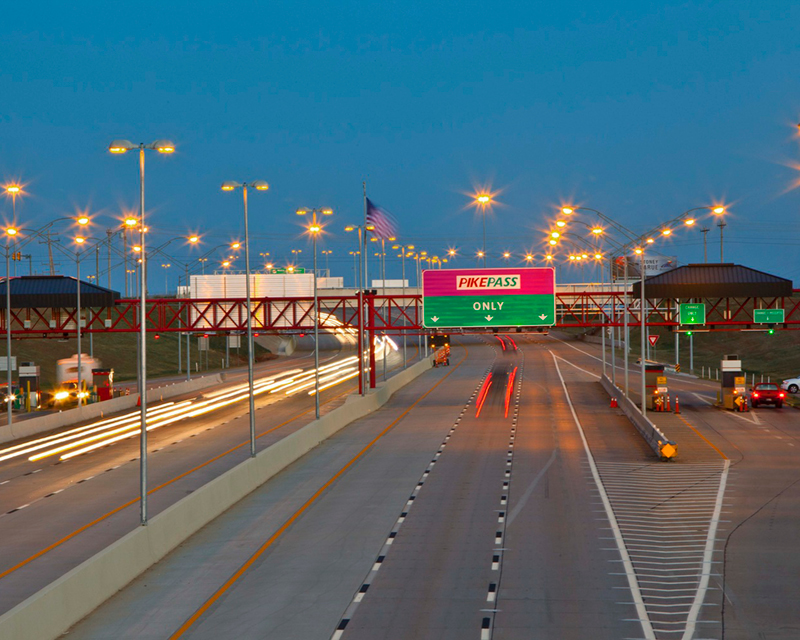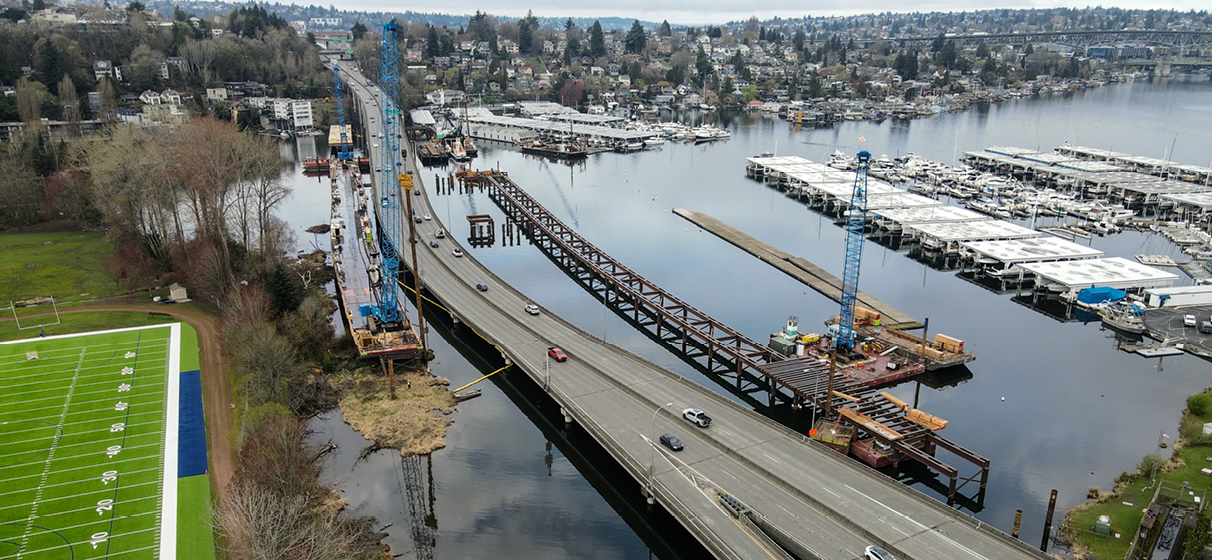As professionals who are deeply entrenched in the evolution of tolling and mobility technology, we’ve seen firsthand how quickly the landscape is shifting. Today, a new frontier is emerging in the form of Vehicle-to-Everything (V2X) communication.
During a recent panel discussion at the Toll Insight Innovation Showcase 2025, we discussed how V2X is no longer just a theoretical framework – it’s a practical tool poised to redefine how we collect tolls, manage traffic and enhance safety on our roadways. V2X offers a smarter, faster and leaner alternative to the traditional infrastructure-heavy approach to tolling. Instead of relying solely on gantries, sensors and cameras, V2X enables real-time, vehicle-originated data exchanges that reduce roadside clutter, improve system responsiveness and deliver real safety benefits. That means fewer delays, more accurate revenue collection and an ecosystem that adapts dynamically to the needs of travelers.
From Concept to Connectivity: The Evolution of V2X
The concept of vehicles communicating with each other and with roadway infrastructure isn’t new. It dates back to 1999, when the Federal Communications Commission (FCC) allocated 75 MHz of spectrum for this very purpose. Over the next two decades, federal agencies and the private sector worked on dedicated short-range communications (DSRC), aiming to enable everything from vehicle-to-vehicle (V2V) to vehicle-to-infrastructure (V2I) interactions.
But momentum truly picked up in 2018 with the emergence of cellular-based V2X (C-V2X) technologies. These systems leverage cellular networks to transmit data – transforming every connected car into a real-time sensor that communicates not just with tolling infrastructure, but with pedestrians, cyclists, cloud-based services and more. The industry has coalesced around the cellular standard, allowing for greater scalability and interoperability.
Today, most original equipment manufacturers (OEMs) are embedding cellular modems directly into vehicles. This creates a top-layer ecosystem where mobility data can be harvested and analyzed – opening doors to applications like emergency vehicle alerts, dynamic toll pricing and wrong-way driver warnings. The implications for safety, efficiency and operational insight are enormous.
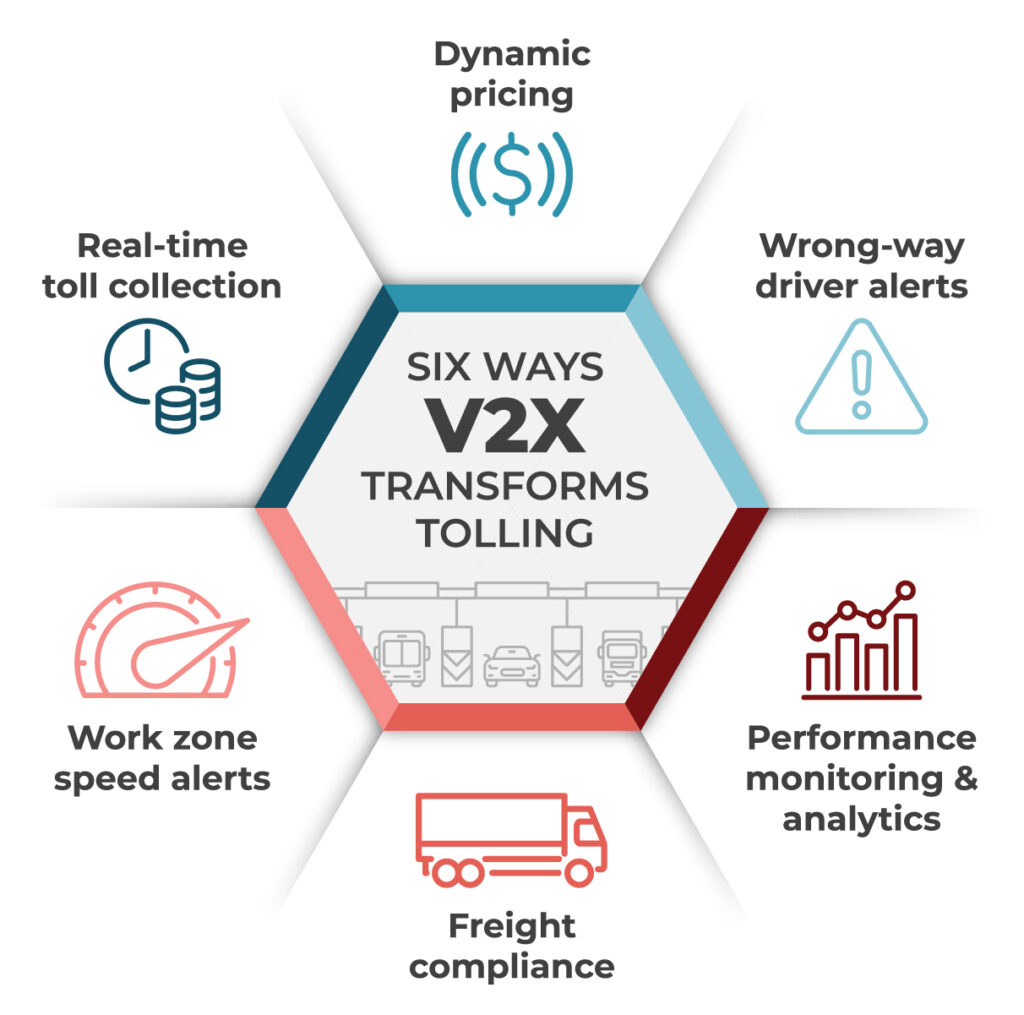
The Tolling Advantage: Safer Roads and Smarter Revenue Collection
V2X offers more than just a shift in technology for tolling. With real-time data, agencies can deliver seamless payments, dynamic pricing and freight compliance mechanisms without requiring drivers to slow down or alter behavior. OEM-integrated tolling, for example, can simplify billing and reduce the risk of violations.
From a safety standpoint, V2X unlocks tools like automated slow-down alerts for work zones, early warnings for wrong-way drivers and maintenance crew proximity detection. The technology can also allow agencies to assess real-time roadway performance, detect infrastructure deterioration and study travel demand with unprecedented granularity.
Moving Forward: Adoption, Pilots, and Policy
So, what stands between where we are now and a fully connected tolling ecosystem? Three things: technology deployment, standards alignment and strategic pilot programs.
Most vehicles today still lack standardized V2X capabilities. There’s a long road ahead for retrofitting or replacing the 300 million vehicles in the U.S. alone. Likewise, not all jurisdictions have the roadside units or back-end systems needed to process V2X data effectively. This underscores the importance of interoperability and common frameworks – aka, what works in one state should work in another.
Pilots are the proving grounds. They help agencies understand not just the technology, but the institutional nuts and bolts – privacy, procurement, IT governance, etc. – that can make or break a deployment. Encouragingly, tolling agencies often have more flexibility than traditional DOTs to fast-track innovation. This creates a real opportunity to lead.
Build It, and They Will Come
The good news is the foundation is already here. The technology exists. The standards are taking shape. The vehicles are evolving. All that’s left is to build the network and start putting theory into practice.
We can’t wait for the perfect system. We have to start with what we have and let real-world implementation shape the rest. As we do, V2X will not only transform tolling, it will reshape mobility as a service, redefine roadway safety and make our infrastructure systems smarter and more resilient.
Ultimately, the goal remains the same: a safer, more efficient, and user-centric transportation ecosystem. V2X isn’t just part of that future – it’s the path that gets us there.
